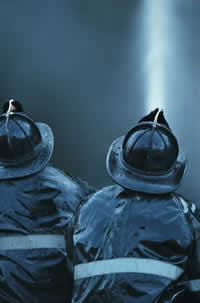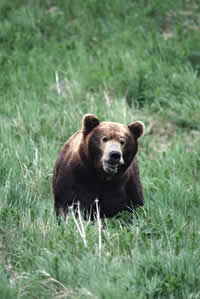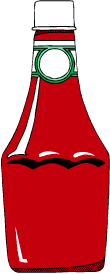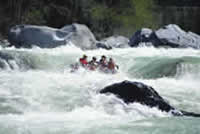Lesson 2: Fluids
Textbook Readings
ScienceFocus 8
Pages 4-12
or
Science in Action 8
Page 13
As you learned in the last lesson, the two most common fluids are liquids and gases. Gases and liquids are fluids because they have no fixed shape and they can flow.
Background Information Fluids are found just about everywhere you look. You will find them in your home, in technological devices (machines), and in nature.
Experiment Time: Identifying Fluids in Your Home 
Problem: How many fluids are in your home?
Materials:
- access to your refrigerator
- cupboard with cleaning supplies
- other areas of the house
|
Safety Precautions
Be very careful when handling cleaning supplies. This part of the activity should be done under the direct supervision of an adult.
|
Procedure:
1. Prepare a chart similar to the one shown below.
|
Location
|
Fluid
|
Properties and Uses
|
| refrigerator |
ketchup |
liquid
flows when poured
used as a sauce to add flavour to many types of foods |
|
Location
|
Fluid
|
Properties and Uses
|
| cleaning cupboard |
ammonia |
liquid
flows when poured
hazardous substance
it is an irritant so be very careful handling it |
|
|
|
|
|
|
|
|
|
|
|
|
|
|
|
| |
|
|
|
|
|
|
|
|
|
|
|
| Furnace |
Hot air |
air is a fluid
air flows
contains gases, such as oxygen, that are needed for survival of most living things |
|
|
|
| |
|
|
| |
|
|
| |
|
|
|
|
|
| 2. Look inside your refrigerator. Identify five fluids and describe their properties or uses. Record your observations. Note that the first one has been completed for you.
3. Look inside your the cupboard or area(s) where cleaning supplies are stored. Identify five fluids and describe their properties or uses. Record your observations.
4. Look around other areas of your home. Identify five additional fluids and describe their properties or uses. Remember that both liquids and gases are fluids. Record your observations
|
|
|
Experiment Time: Fluids in Nature
One of the key functions of fluids is their ability to transport other materials. Blood in humans and other animals transport nutrients and oxygen to every cell in the organism. Blood also transports wastes away from the cells and to the organs of the excretory system. In nature, rainwater dissolves nutrients in the soil and makes these nutrients available to the plants. Food made in plant leaves is transported in a fluid called "sap."
Another key function of fluids is to support life.
In this activity, you will investigate the role of fluids in nature.
|
Column 1
|
Column 2
|
Column 3
|
|
|
|
|
 |
 |
 |
 |
|
|
Problem:
| Can you identify other fluids? |
Materials:
- pictures provided
- access to electronic and print resources
Procedure:
1. Prepare a chart similar to the one shown below.
|
Photograph
|
Fluid(s)
|
Properties and Uses
|
| human - construction worker |
blood |
blood is a fluid that is used to transport materials such as food and oxygen to cells |
| |
|
|
| |
|
|
| |
|
|
| |
|
|
|
|
|
|
|
|
|
| 2. List the items shown in the photographs in the first column.
3. In the second, use your previous knowledge, the Internet, or print resources to identify one fluid that is depicted in the photograph.
4. In the third column, predict one use of the fluid. An example has been provided for you.
|
|
|
© 2002 Alberta Online Consortium
|










